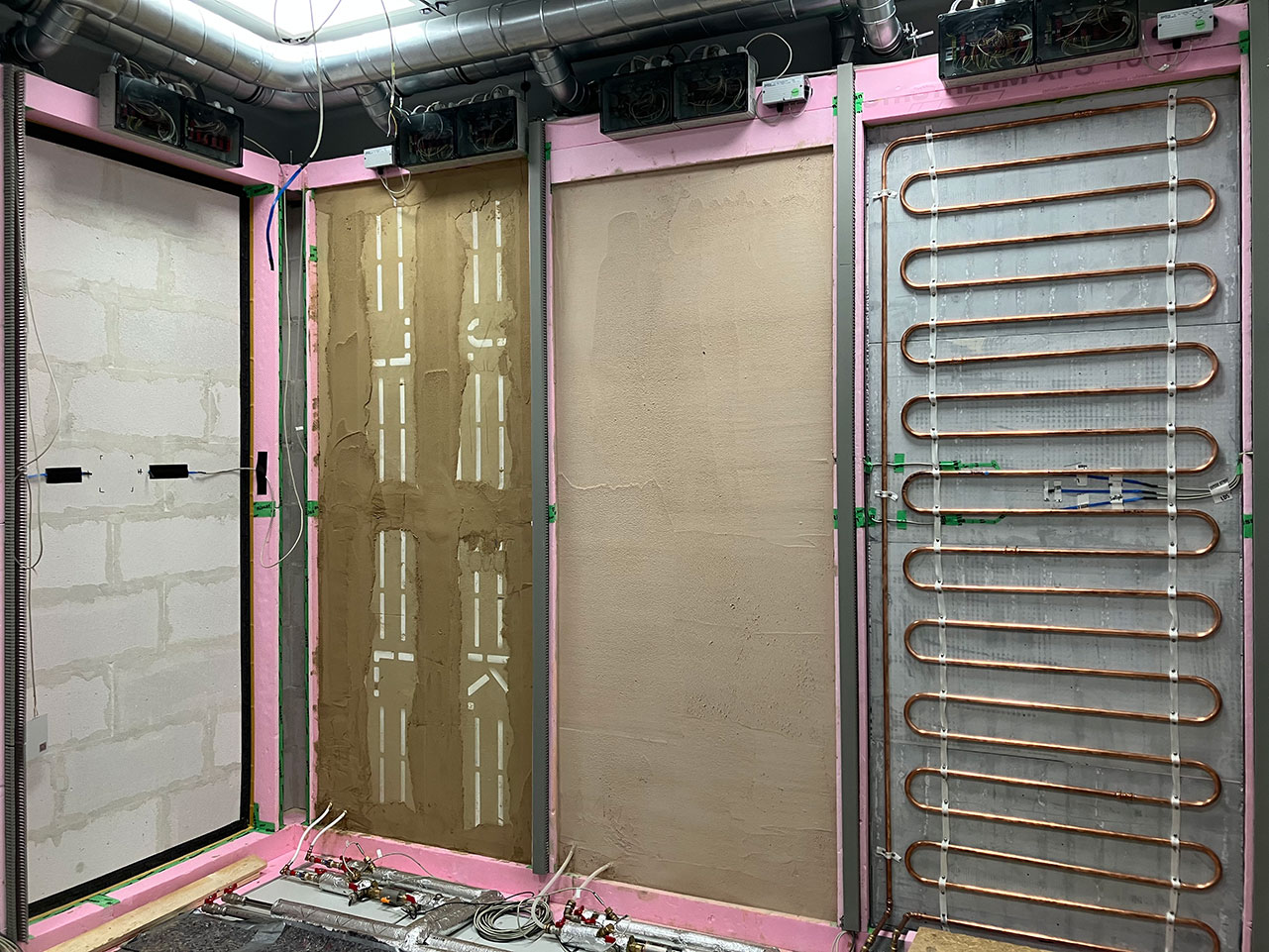
When wall heating systems are installed on exterior walls in existing buildings, adding interior insulation is particularly beneficial. It reduces heat loss through the exterior wall and, at the same time, allows a transition to surface heating systems, which offer enhanced thermal comfort, lower flow temperatures, and better integration with renewable energy sources. This combination is best approached as a comprehensive, highly energy-efficient Wall Heating-Interior Insulation Hybrid System (H-WIHS). To realize this concept, 10 manufacturing companies and 2 trade associations are working in close collaboration with Fraunhofer IBP in a project funded by the German Federal Ministry for Economic Affairs and Climate Action (BMWK). The implementation of six real-world test areas at the Fraunhofer Center in Benediktbeuern enables a broad-based study and demonstration aimed at knowledge transfer.


